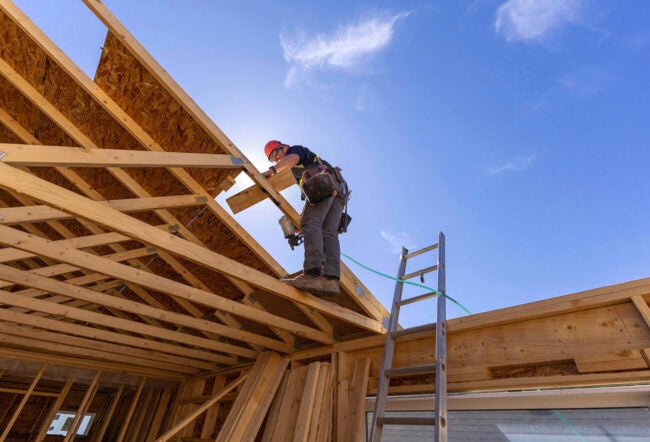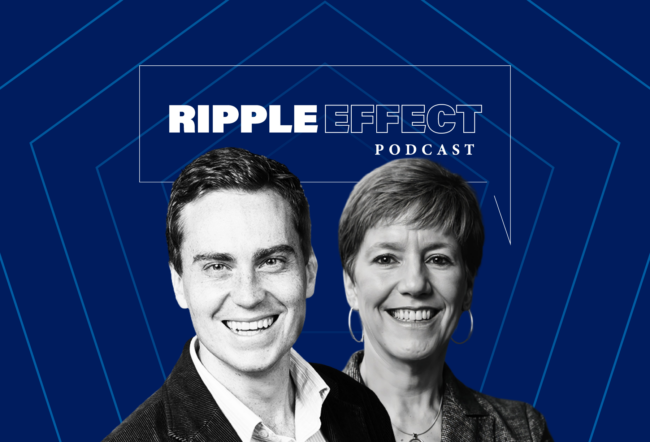 Despite rock-bottom mortgage rates — around 4% for a 30-year, fixed-rate loan — potential homebuyers are faced with a dilemma: How will they come up with the 20% down payment many lenders now require in order to secure a mortgage? Although the Federal Housing Administration, Veterans Affairs and the U.S. Department of Agriculture offer loans with lower down payments, a recent Knowledge at Wharton story notes that lenders, spooked by regulatory changes and their own recent experiences with defaults, have changed the stakes. Long gone, it seems, are the days when borrowers could get into homes without having to save a considerable amount. Will buyers be able to meet this demand in a poor economy? And what’s the likelihood that lower down payments will return? Wharton real estate professor Todd Sinai weighs in below:
Despite rock-bottom mortgage rates — around 4% for a 30-year, fixed-rate loan — potential homebuyers are faced with a dilemma: How will they come up with the 20% down payment many lenders now require in order to secure a mortgage? Although the Federal Housing Administration, Veterans Affairs and the U.S. Department of Agriculture offer loans with lower down payments, a recent Knowledge at Wharton story notes that lenders, spooked by regulatory changes and their own recent experiences with defaults, have changed the stakes. Long gone, it seems, are the days when borrowers could get into homes without having to save a considerable amount. Will buyers be able to meet this demand in a poor economy? And what’s the likelihood that lower down payments will return? Wharton real estate professor Todd Sinai weighs in below:
KnowledgeToday: Is it realistic to think that borrowers can come up with 20% in today’s economy?
Todd Sinai: Thirty years ago, a 20% down payment was the norm. Where did borrowers come up with that down payment? They saved, and their parents chipped in. Both tactics are more difficult nowadays. The return to saving is much lower than it has been historically, making it more difficult to accrue a down payment. And, given the recent turmoil in the financial markets, parents are less likely to feel financially comfortable enough to contribute to their children’s down payments. For these reasons, it will take borrowers longer to accrue their down payments than it did in the past, slowing the transition to first-time home buying. Borrowers will also compensate by buying a less expensive first home, reducing the amount of down payment they need to come up with. But it is unrealistic to think that borrowers cannot come up with 20% down payments. If that is what it takes to buy a house, they will do it, however slowly.
KnowledgeToday: Do you believe this is the market model going forward, or is it likely to change anytime soon?
Sinai: I don’t think anyone ever went wrong betting on bankers lending money! Lower down payments will surely return. There is a demand for high LTV [loan-to-value ratio] loans [for credit-worthy] borrowers who simply have not been able to amass enough equity for a 20% down payment but who have the incomes to support the debt service. That demand is especially strong because the return to saving is so low — making it hard to accumulate a down payment — and the cost of borrowing is so cheap. Even if lenders charged a sizeable risk premium for high LTV loans, the absolute cost of borrowing would still be historically low. I expect that lenders will grow ever more comfortable with the risk of lending in the wedge between 80% and 90% LTV and will be happy with the yields they are able to obtain.
The open question is: How long it will take for higher LTV loans to become widespread again, and how far down the credit-quality distribution will those loans be made? They already are available for good borrowers in stable housing markets. Hopefully, lenders will have enough discipline that high LTV loans do not become as widespread as they were in the mid-to-late 2000s, though.
KnowledgeToday: What kinds of changes do you think could most help the ailing housing market?
Sinai: If the demand for housing grows, house prices will rebound. And the bottom line is that demand for housing — for a roof over your head and space for your family — is dependent on employment and income. So the surest way to recovery in the housing market is economic growth and a stable job market. A rebounding economy will first be reflected in the rental housing market — people are still skittish about the permanence of buying a home — and we are already seeing that growth in apartment rents in many cities. Eventually, those renters will become home buyers. Even though the owner-occupied housing market is being handicapped by frictions in the lending market and some reluctance on the part of households to buying, enough growth in the underlying demand for places to live will improve the owner-occupied market nonetheless. And that improvement consequently would mitigate the hurdles of liquidity and buyer skittishness.
That approach begs the question of what policies could improve economic growth — and whether growth is possible in the absence of an improving housing market. By contrast, the policies that have been proposed to jump-start the owner-occupied housing market and clear up households’ balance sheets — for example, allowing for refinancing of under-water mortgages — aim to bootstrap the economy by improving the housing market, which will lead to greater economic growth, which in turn would better the housing market even more.
Should a policy start with the chicken — the economy — or the egg — the housing market? In practice, they are not mutually exclusive. Policies aimed at promoting employment and income growth and policies aimed at the housing market are complementary, and the choice of policy should be guided more by “bang for the buck” rather than by whether it works through the housing market or the broader economy. However, given the long time horizon of housing investments, any housing policy or fiscal stimulus should be permanent rather than temporary.



